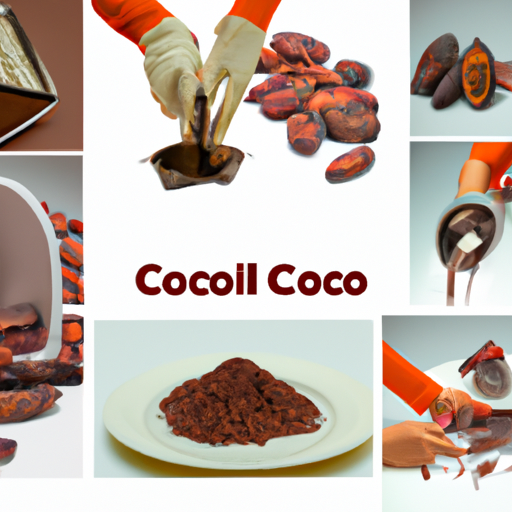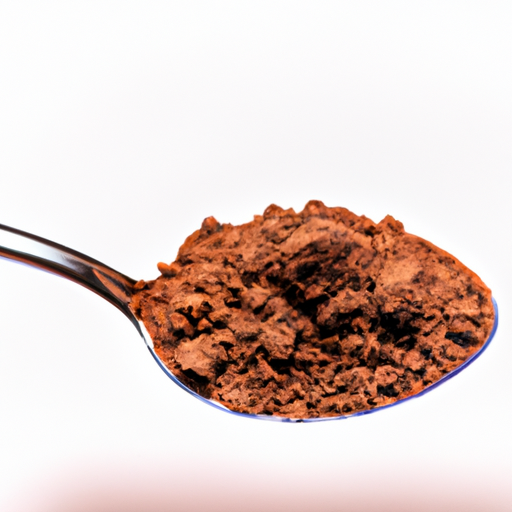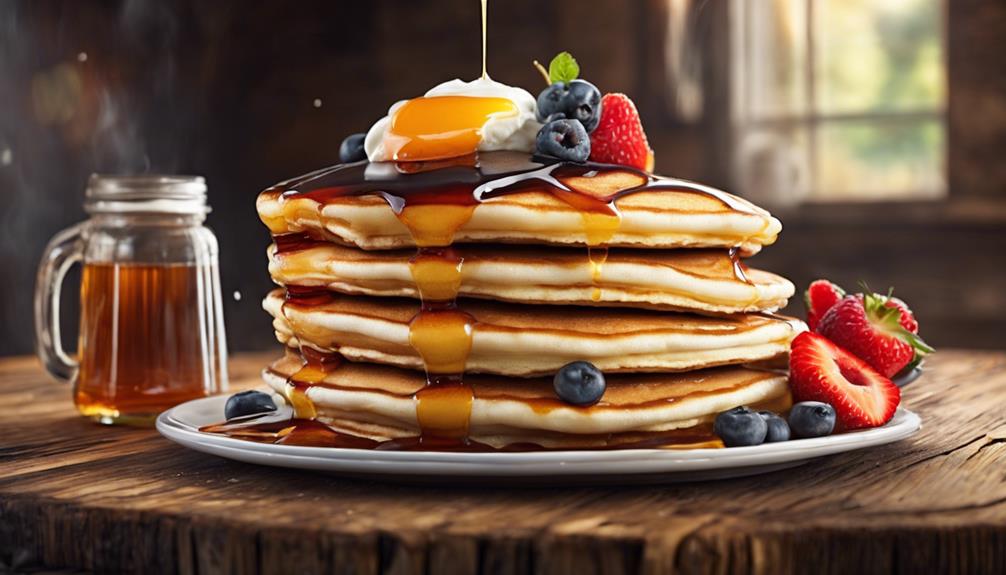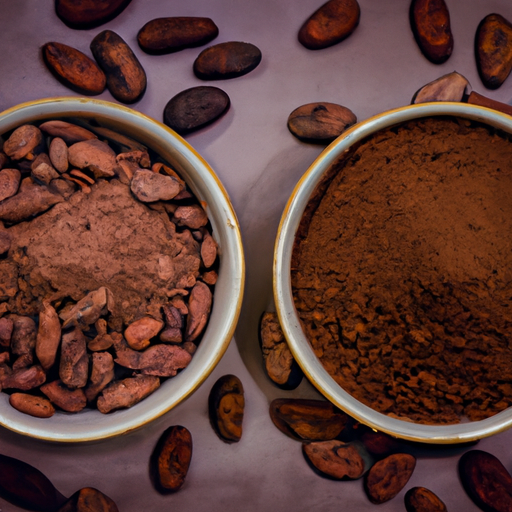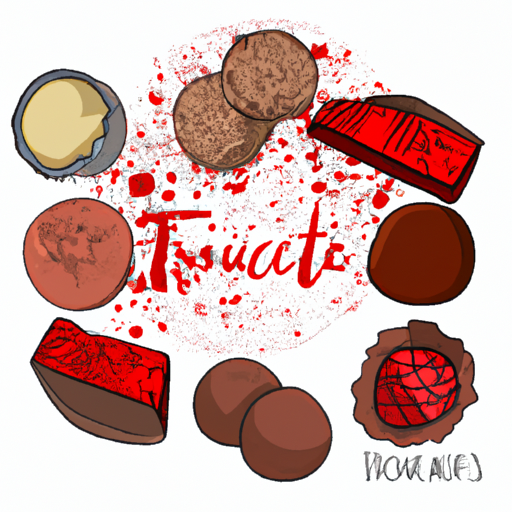Picture enjoying a decadent, creamy square of chocolate that not only fulfills your cravings but also provides nourishment for your body. This is the wonder of raw chocolate sourced from cacao beans. Being a devoted chocolate enthusiast, I have explored the realm of creating homemade raw chocolate, and it has truly revolutionized my experience.
In this article, I will guide you through the step-by-step process of creating your own delectable raw chocolate from scratch. We’ll explore the health benefits of raw cacao, how to source and select high-quality cacao beans, and the art of roasting and grinding them to perfection.
I’ll also share techniques for adding sweetness and enhancing the flavor with delightful additions. We’ll dive into the intricacies of tempering and shaping your raw chocolate, and I’ll provide tips on storing and preserving your creations.
Lastly, we’ll explore a variety of mouthwatering raw chocolate recipes that will leave you craving for more. Get ready to embark on a journey of pure chocolate bliss, and embrace the raw chocolate lifestyle like never before.
Key Takeaways
- Raw chocolate made from cacao beans offers indulgence and nourishment, providing a nutrient-rich treat.
- Prioritize sustainable and ethical practices when sourcing cacao beans for raw chocolate production.
- Roasting techniques can enhance the natural sweetness and aroma of cacao beans, with different roasts offering unique flavors.
- Experiment with different sweeteners, flavor combinations, and mix-ins to create a variety of taste profiles for raw chocolate.
The Health Benefits of Raw Cacao
Now, let’s talk about why you should be excited about using raw cacao in your chocolate-making endeavors!
Raw cacao is not only delicious, but it also offers a range of health benefits that processed chocolate simply can’t match.
When it comes to nutrition, raw cacao is a powerhouse. It is packed with essential minerals like magnesium, iron, and zinc.
In fact, raw cacao has 40 times more antioxidants than blueberries! These antioxidants play a crucial role in protecting our cells from damage caused by harmful free radicals.
By incorporating raw cacao into your chocolate, you are not only satisfying your sweet tooth, but you are also providing your body with a nutrient-rich treat.
So, now that we understand the health benefits, let’s move on to sourcing and selecting quality cacao beans.
Sourcing and Selecting Quality Cacao Beans
First, you need to seek out the finest cacao beans available, like finding hidden gems in a treasure hunt. When sourcing cacao beans, it is important to prioritize sustainable farming practices and ethical sourcing. Look for beans that have been grown using organic methods, without the use of harmful chemicals or pesticides. Additionally, consider supporting farmers who employ fair trade practices, ensuring that they receive a fair wage for their hard work.
In your search for quality cacao beans, pay attention to the country of origin. Different regions produce cacao beans with unique flavor profiles, so experiment with beans from different countries to find your preference. When selecting beans, examine their appearance and aroma. Opt for beans that are uniform in color and have a rich, chocolatey scent. These indicators can help you identify beans of superior quality.
Transitioning into the subsequent section about roasting and grinding cacao beans, the sourcing and selection of high-quality cacao beans lays the foundation for creating delicious raw chocolate.
Roasting and Grinding Cacao Beans
To create a heavenly treat that will ignite your taste buds, you’ll want to dive into the art of roasting and grinding those exquisite cacao beans.
Roasting techniques play a crucial role in developing the complex flavors of raw chocolate. By carefully adjusting the temperature and duration, you can enhance the natural sweetness and aroma of the beans. Some prefer a light roast for a more delicate taste, while others opt for a deeper roast to bring out a richer, bolder flavor profile.
Once roasted, it’s time to grind the beans into a smooth, velvety consistency. Grinding methods vary, from using a traditional stone grinder to modern electric grinders. The goal is to transform the roasted beans into a fine paste, a process that releases the beans’ natural oils and creates the foundation for the luscious texture of your raw chocolate.
As we move into the next section about adding sweetness to your raw chocolate, the grinding process sets the stage for the perfect balance of flavors.
Adding Sweetness to Your Raw Chocolate
Enhance the delectable flavors of your homemade treat by infusing it with a touch of natural sweetness. When it comes to adding sweetness to your raw chocolate, there are various sweetener options to choose from.
Opting for natural sweeteners not only adds a delightful taste but also ensures a healthier indulgence. One popular choice is raw honey, which imparts a rich, floral sweetness. Alternatively, you can use maple syrup for a deep, caramel-like flavor. Another option is coconut sugar, which adds a subtle, earthy sweetness. If you prefer a zero-calorie sweetener, stevia is a great choice.
Experiment with different sweeteners to find your preferred taste profile. Once you’ve added the perfect amount of sweetness, you can move on to enhancing the flavor with additions that complement the chocolatey goodness.
Enhancing the Flavor with Additions
Once you’ve perfected the level of sweetness, it’s time to elevate the flavor of your homemade treat with a variety of delicious additions. Experimenting with different flavor combinations can take your raw chocolate to a whole new level.
Consider adding ingredients like sea salt, vanilla extract, or even a pinch of chili powder to create unique and exciting flavor profiles. You can also mix in dried fruits, nuts, or coconut flakes to add texture variations and a burst of flavor with every bite.
Don’t be afraid to get creative and think outside the box! As you explore different flavor options, you’ll discover endless possibilities for enhancing the taste of your raw chocolate.
Now that your chocolate is bursting with flavor, it’s time to move on to the next step of tempering and shaping your raw chocolate.
Tempering and Shaping Your Raw Chocolate
Now that we have enhanced the flavor of our raw chocolate with delicious additions, it’s time to move on to the next step: tempering and shaping.
Tempering is a crucial technique that ensures our chocolate has a shiny appearance and a firm, smooth texture. There are various tempering techniques to choose from, such as the seeding method or the tabling method, each requiring precision and patience.
Once our chocolate is properly tempered, we can proceed to shape it using molds. These molds come in a variety of shapes and sizes, allowing us to get creative with our chocolate creations. Whether it’s simple bars, elegant truffles, or intricate designs, the possibilities are endless.
Now that we have perfected our tempering and shaping skills, let’s move on to the next section on storing and preserving our raw chocolate, ensuring its freshness and quality for as long as possible.
Storing and Preserving Your Raw Chocolate
When it comes to storing and preserving my raw chocolate, I always make sure to use proper storage containers and maintain the right conditions. I find that airtight containers made of glass or BPA-free plastic work best, as they prevent moisture and odors from affecting the chocolate.
Additionally, I extend the shelf life of my raw chocolate by properly sealing them in the containers and storing them in a cool, dark place away from direct sunlight or heat sources.
Finally, to prevent blooming or melting, I recommend avoiding temperature fluctuations and keeping the chocolate away from strong odors, as they can affect its quality.
Proper storage containers and conditions
To keep your cacao beans fresh and preserve their flavor, store them in airtight containers with a cool temperature and low humidity. Proper storage is essential in ensuring the longevity of your raw chocolate.
When choosing storage containers, opt for those made of glass or metal that have a tight seal. This will prevent moisture and air from entering, which can cause the beans to spoil and their flavor to deteriorate.
Additionally, it is important to store the containers in a cool environment, away from direct sunlight and heat sources. Maintaining a low humidity level is crucial as high humidity can lead to the growth of mold and spoilage.
By following these proper storage and preserving conditions, you can extend the shelf life of your raw chocolate and enjoy its rich flavors for a longer period.
Transitioning into the subsequent section, let’s now explore how to extend the shelf life with proper sealing techniques.
Extending shelf life with proper sealing
By ensuring airtight containers with proper sealing, you can extend the shelf life of your cacao beans and preserve their rich flavor. Packaging techniques play a crucial role in preventing the deterioration of your raw chocolate. Here are some key points to consider:
- Vacuum sealing: Remove as much air as possible from the container to prevent oxidation and moisture absorption.
- Moisture-proof packaging: Use moisture-proof bags or containers to shield the cacao beans from humidity, which can cause mold growth.
- Light-blocking materials: Opt for opaque containers or bags that block out light, as exposure to light can degrade the quality of your beans.
- Temperature control: Store your cacao beans in a cool, dry place to slow down the aging process and maintain their freshness.
By implementing these packaging techniques, you can significantly prolong the shelf life of your cacao beans and ensure their optimal quality.
Now, let’s move on to some tips for preventing blooming or melting.
Tips for preventing blooming or melting
To prevent blooming or melting, here are some helpful tips:
- Keep your confections cool at all times.
- Store your raw chocolate in a cool, dry place, away from direct sunlight and strong odors.
- Use airtight containers to prevent moisture from getting in.
- Avoid exposing your chocolate to high temperatures.
- If you live in a warm climate, consider refrigerating or freezing your chocolate to extend its shelf life and maintain its quality.
Now that we’ve covered the importance of preventing blooming and melting, let’s move on to exploring raw chocolate recipes.
Exploring Raw Chocolate Recipes
In this discussion, I will explore the world of raw chocolate recipes and share some key points.
First, let’s talk about making raw chocolate bars or squares. This allows you to customize the flavors and textures to your liking, while still reaping the health benefits of raw cacao.
Next, we’ll delve into indulging in raw chocolate desserts and treats. These are a guilt-free way to satisfy your sweet tooth, with options ranging from rich chocolate mousse to decadent truffles.
Lastly, we’ll discuss enjoying raw chocolate drinks and smoothies. These offer a refreshing and nutritious way to incorporate raw cacao into your daily routine, providing a boost of antioxidants and energy.
Raw chocolate bars or squares
To create a delectable treat, why not whip up some mouthwatering raw chocolate bars or squares from scratch using cacao beans? Making your own raw chocolate bars allows you to have full control over the ingredients and create unique flavor combinations.
First, you’ll need raw chocolate molds, which come in various shapes and sizes. These molds allow you to create perfectly formed bars or squares that are visually appealing.
Next, comes the tempering process, which is crucial for achieving that shiny, smooth finish. Tempering involves heating and cooling the chocolate to specific temperatures to ensure the cocoa butter crystallizes correctly. This process gives your bars or squares a satisfying snap and prevents them from melting too quickly.
Now, with your perfectly tempered raw chocolate bars or squares, you can move on to creating an array of raw chocolate desserts and treats.
Raw chocolate desserts and treats
Crafting your own luscious confections from scratch using freshly ground cacao beans opens up a world of possibilities for tantalizing raw chocolate desserts and treats.
For beginners in the world of raw chocolate, there are simple recipes that can be enjoyed by both adults and kids alike. One popular treat is raw chocolate truffles, made by combining melted raw chocolate with dates, nuts, and a hint of vanilla. These bite-sized delights are perfect for satisfying your sweet tooth while still indulging in the health benefits of cacao.
Another favorite is raw chocolate avocado pudding, which blends creamy avocado with raw cacao powder and sweeteners like maple syrup or dates. The result is a silky smooth dessert that is both decadent and nutritious.
As we delve into the next section about raw chocolate drinks and smoothies, we can explore even more ways to incorporate this delectable ingredient into our daily lives.
Raw chocolate drinks and smoothies
Now that we’ve explored the realm of raw chocolate desserts and treats, let’s dive into the world of raw chocolate drinks and smoothies.
As a chocolate enthusiast, I can’t resist indulging in a velvety, rich raw chocolate smoothie. These smoothies are not only delicious, but they also offer numerous health benefits.
Incorporating raw chocolate into your smoothie recipes can provide a natural energy boost, thanks to its high content of antioxidants and minerals. Additionally, raw chocolate can enhance the flavor and creaminess of your smoothies, making them even more satisfying.
To create a tantalizing raw chocolate smoothie, consider blending raw cacao powder, almond milk, ripe bananas, and a touch of maple syrup. This combination creates a heavenly treat that will leave you feeling nourished and satisfied.
Now, let’s continue our journey by embracing the raw chocolate lifestyle and exploring its endless possibilities.
Embracing the Raw Chocolate Lifestyle
Incorporating raw chocolate into my healthy diet has been a game changer for me. It’s not only a delicious treat, but it’s also packed with antioxidants and other beneficial nutrients.
I love exploring other raw cacao recipes, like raw chocolate smoothies and energy balls, to keep my meals exciting and nutritious. Trying out new recipes and experimenting with different flavors is a fun and creative way to embrace the raw chocolate lifestyle.
Sharing my raw chocolate creations with others brings me so much joy and satisfaction. There’s something special about seeing their faces light up with delight as they taste the rich and decadent flavors. It’s a wonderful feeling to be able to share something I’m passionate about and to spread the joy of raw chocolate to others.
Incorporating raw chocolate into a healthy diet
To truly savor the rich and indulgent flavors of raw chocolate, there’s no better way to nourish your body than by seamlessly blending it into a wholesome, balanced diet.
Raw chocolate can be incorporated in various ways, adding depth and complexity to your favorite recipes. Whether it’s in baking or cooking, raw chocolate can elevate the flavors of both sweet and savory dishes.
In baking, you can use raw chocolate as a substitute for conventional cocoa powder, creating decadent treats that are not only delicious but also packed with nutrients.
When it comes to savory dishes, adding a touch of raw chocolate to sauces or stews can bring a delightful richness and depth of flavor.
By incorporating raw chocolate into your diet, you can experience its health benefits while enjoying its incredible taste.
Now, let’s explore other raw cacao recipes and discover the versatility of this incredible ingredient.
Exploring other raw cacao recipes
Let’s dive into some delicious recipes that showcase the versatility of raw cacao! Raw cacao isn’t just limited to sweet treats; it can also be incorporated into savory dishes, resulting in unique flavor combinations that are sure to impress your taste buds.
Here are three mouthwatering recipes to try:
-
Raw Cacao Rubbed Steak: Coat a juicy steak with a mixture of raw cacao powder, sea salt, and spices for a rich and smoky flavor profile.
-
Raw Cacao Chili: Add a tablespoon of raw cacao powder to your favorite chili recipe for a subtle richness and depth of flavor.
-
Raw Cacao Mole Sauce: Create a velvety mole sauce by blending raw cacao powder with dried chilies, garlic, spices, and other ingredients. Drizzle it over grilled chicken or roasted vegetables for a decadent twist.
These savory recipes will elevate your culinary skills and introduce you to the incredible world of incorporating raw cacao into unexpected dishes.
Now, let’s move on to sharing your raw chocolate creations with others.
Sharing your raw chocolate creations with others
Impress your loved ones by sharing the irresistible delights you’ve crafted using the delectable essence of raw cacao.
When it comes to sharing your raw chocolate creations, there are a few tips that can make the experience even more enjoyable for both you and your recipients.
First, consider packaging your raw chocolate treats in beautiful, eco-friendly gift boxes or jars. This will not only make them look more appealing, but also protect them during transportation.
Another idea is to create personalized labels or tags with a heartfelt message, adding a special touch to your gift.
Additionally, you can include a small recipe card with suggestions on how to enjoy the raw chocolate, such as adding it to smoothies or using it as a topping for desserts.
Sharing your raw chocolate creations is a wonderful way to spread joy and introduce others to the amazing world of cacao.
Frequently Asked Questions
Can I use any type of cacao beans for making raw chocolate?
Yes, you can use any type of cacao beans for making raw chocolate. However, for the best results, it’s important to source high-quality cacao beans. Look for beans that are organic, fair trade, and have a high percentage of cacao content.
How long does it take to roast and grind cacao beans?
Roasting time for cacao beans depends on the desired flavor profile, typically ranging from 20 to 30 minutes. Grinding time varies based on equipment and desired consistency, but can take anywhere from 30 minutes to an hour.
What are some natural sweeteners I can use in my raw chocolate?
There are so many amazing natural sweeteners you can use in your raw chocolate, it’s like a sweet explosion! Some great alternatives include maple syrup, coconut sugar, agave nectar, and dates. These options will add a delicious sweetness to your homemade chocolate.
Are there any specific ingredients I can add to enhance the flavor of my raw chocolate?
To enhance the flavor of raw chocolate, I suggest trying unique flavor combinations like adding a hint of sea salt or a touch of vanilla extract. You can also experiment with spices like cinnamon or chili powder for a delightful twist.
Can I use any type of mold to shape my raw chocolate?
From silicone to metal, there are various molds available for shaping raw chocolate. To achieve a smooth finish, it’s crucial to properly temper the chocolate by heating and cooling it in a specific manner.
Can I Use Cacao Nibs Instead of Cacao Beans to Make Raw Chocolate?
Yes, you can absolutely use cacao nibs when making raw chocolate. In fact, using cacao nibs instead of cacao beans is a common practice, as the nibs are already partially ground and ready to be used in chocolate making. Simply grind them down further to achieve the desired texture.
Conclusion
In conclusion, making raw chocolate from cacao beans is a truly fascinating process.
First, it starts with sourcing and selecting the best cacao beans.
Next, the beans are roasted to bring out their rich flavors and then ground to perfection.
To enhance the taste, sweetness and flavor can be added with carefully chosen additions.
Proper tempering and shaping techniques are important for creating a beautiful and professional-looking final product.
So why wait? Dive into the world of raw chocolate and explore the endless possibilities it offers.
Your taste buds will thank you.

